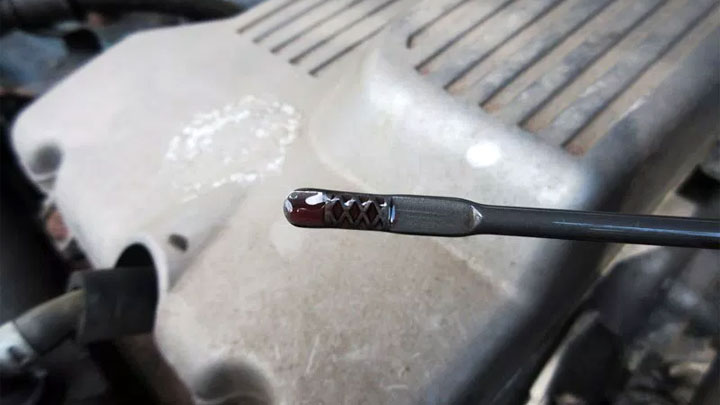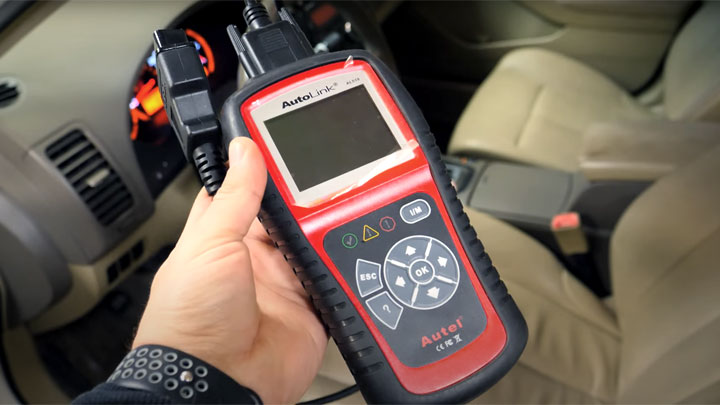P0711 Code (Symptoms, Causes, and How to Fix)
If your vehicle’s check engine light has been traced back to a P0711 fault code, you likely find yourself questioning what it means, and more importantly, how much it’s going to cost to fix.
This particular trouble code indicates an issue with the transmission fluid temperature sensor. We’ll go over the most likely causes of a P0711 code, the symptoms you may experience, and how to go about fixing it.

What Does Code P0711 Mean?
Diagnostic fault code P0711 is indicative of an out of range temperature sensor reading, originating with a vehicle’s “A” transmission sensor circuit. This sensor is generally used to monitor and communicate data related to the temperature of a transmission’s lubricating fluid to a vehicle’s PCM, in a real-time fashion.
The bulk of modern transmission fluid temperature sensors utilize a 5v reference feed, which is internally resisted in parallel to fluctuating transmission fluid temperatures. This resisted feedback voltage is then interpreted in terms of temperature by a vehicle’s PCM, and inputted into the module’s operating logic.
In reality, the feedback issued by a vehicle’s transmission fluid temperature sensor is used to determine much more than the occurrence of an overheating condition.
In fact, this data is essential to almost every critical transmission function, including the initiation of efficient shift logic, and the desired point of torque converter engagement/disengagement.
In the grand scheme of everything, diagnostic fault code P0711 is perhaps best described as a logged event of overheating within a transmission’s sump, whether actual or perceived by the affected vehicle’s PCM.
Simply put, this logged event could signify a true occurrence of overheating, or erroneous feedback from the specified temperature probe itself.
Symptoms of Code P0711

Diagnostic fault code P0711 is often associated with several different symptoms, some of which prove to be more bothersome than others. Recognizing these symptoms often proves imperative to isolating and diagnosing the issue at hand, in the most quick and efficient means possible.
The following are several of the most common symptoms related to DTC P0711.
- Illuminated check engine light
- Harsh or erratic shifts
- Derated performance
- Torque converter slippage
- Smoke from transmission
- Smell of burning transmission fluid
Causes of Code P0711

Code P0711 can be caused by one of many underlying conditions, several of which can be relatively difficult to pinpoint. However, those familiar with these possibilities are generally more adept at making the necessary diagnosis and repair in a timely manner.
The following are several of the most common causes of DTC P0711.
- Low transmission fluid
- Fouled or dirty transmission fluid
- Faulty transmission temperature sensor
- Compromised circuit to/from transmission temperature sensor
- Failing PCM/ECM
- Internal transmission failure
Is Code P0711 Serious?
Generally speaking, DTC P0711 is typically regarded with a fair amount of concern. While your vehicle’s transmission might not be truly overheating, there is always the chance that it is.
For this reason, continued operation of the affected vehicle is not advised, until the root cause of this fault is isolated. Just like when a vehicle’s engine is suspected of overheating, the best protocol is to pull over and shut the vehicle in question off.
If, in reality, a vehicle’s transmission fluid has exceeded the higher extreme of its operating temperature range, rapid lubricant breakdown can result. This poses a grave risk to a vehicle’s transmission, up to and including slippage and other forms of internal failure.
In the meantime, attempting to drive in light of such an active fault is likely to yield a number of driveability-related symptoms, such as erratic shifting.
In any event, the root cause of a vehicle’s P0711 diagnostic fault code should be thoroughly diagnosed and repaired as soon as possible. Doing so ensures that no undue stress is imparted upon your vehicle’s transmission, thereby negating potential underlying repair costs.
If the thought of diagnosis and repair seems too complex, it would be best to consult a professional transmission shop or auto repair shop you trust to assess the issue rather than attempting to fix it yourself.
How to Fix Code P0711

Use these troubleshooting steps to pinpoint the origin of the P0711 code in your vehicle, but be sure to reference a good repair manual specific to your make and model before starting any work. Attempting repairs without the proper documentation risks creating additional problems.
#1 – Check For Additional DTCs
Before beginning the diagnostic process, always check for the presence of any additional fault codes with the use of an OBD-II scan tool. Any additional codes that are found should be thoroughly diagnosed before proceeding.
#2 – Analyze Transmission Fluid
Begin by carefully checking your vehicle’s transmission fluid, both in terms of level and quality.
If the fluid in question is low, it should be topped off and a thorough inspection for leaks should be conducted. If this fluid appears dark or smells burnt, a full transmission service is likely required.
Related: Transmission Fluid Color Chart
#3 – Inspect Sensor and Wiring
Next, you should thoroughly inspect the transmission fluid temperature sensor for signs of obvious damage. Any noted defects will ultimately warrant replacement.
Likewise, inspect the wiring pigtail associated with this sensor for signs of obvious damage or corrosion. Any non-compliant conditions that are noted should be corrected before proceeding.
#4 – Qualify Sensor Inputs/Outputs
If the prior visual checks have yielded no results, you should verify the presence of a valid input feed and ground at the sensor in question. If either value is missing, further electrical diagnosis will be required.
If all values are present, the sensor’s feedback wire should be backprobed, in an attempt to record resisted voltage with a multimeter. If no feedback voltage is recorded, resistance readings can be taken across the sensor input/output terminals to be compared to readings specified by the vehicle’s manufacturer.
#5 – Drain and Assess Fluid
If your vehicle’s transmission temperature sensor tests satisfactorily, there is a fair chance that an instance of overheating actually occurred. To better evaluate this concern, a vehicle’s transmission fluid should be drained and retained for further evaluation.
You should carefully check for shimmering metal or signs of clutch-pack debris. Copious amounts of this material would signify an internal transmission failure.
- P0480 Code (Symptoms, Causes, and How to Fix) - Apr 19, 2024
- Car Temperature Gauge Stopped Working? (Here’s Why) - Apr 15, 2024
- Ignition Coil vs Coil Pack (What’s the Difference?) - Apr 8, 2024
